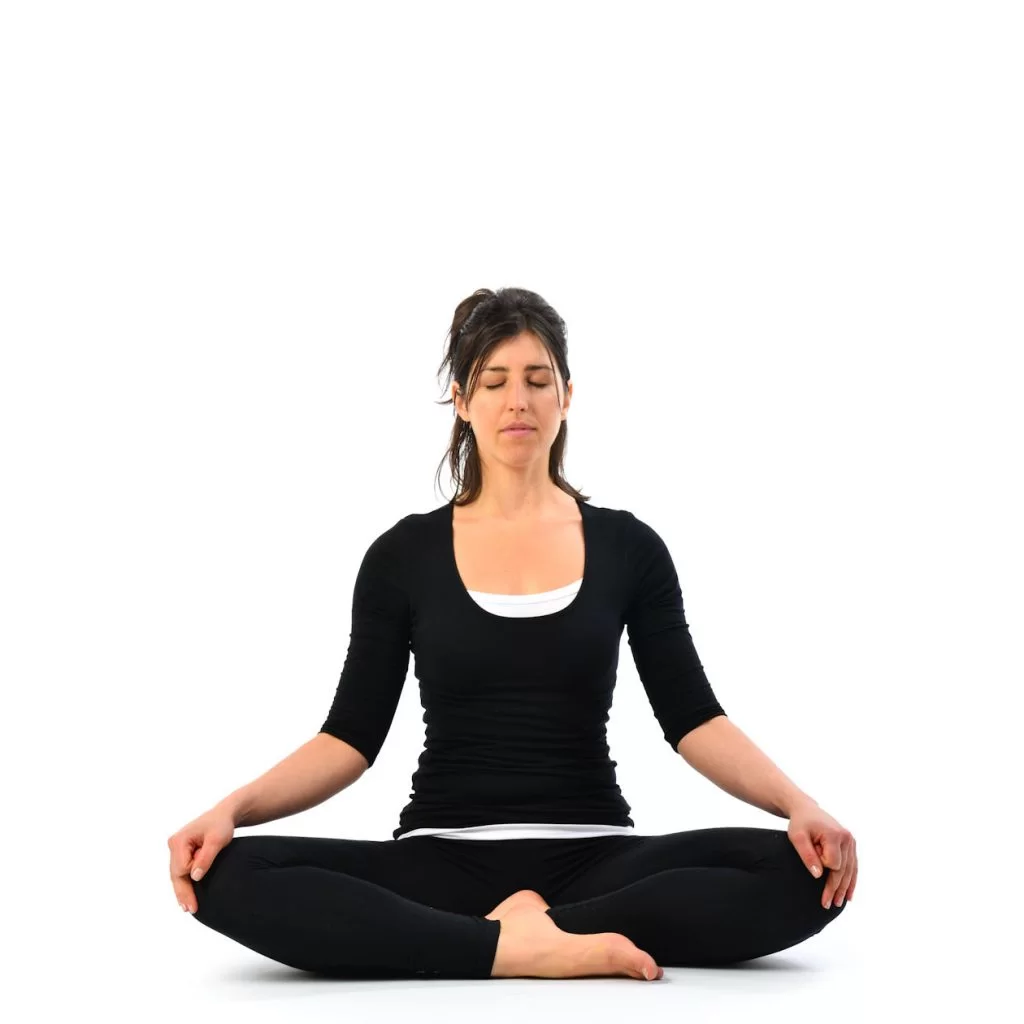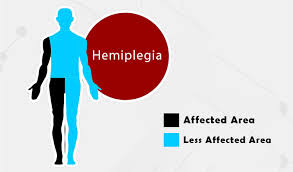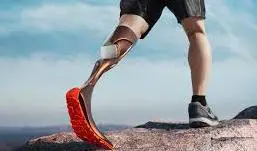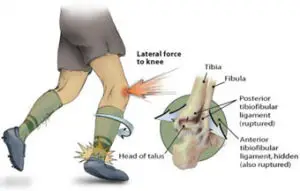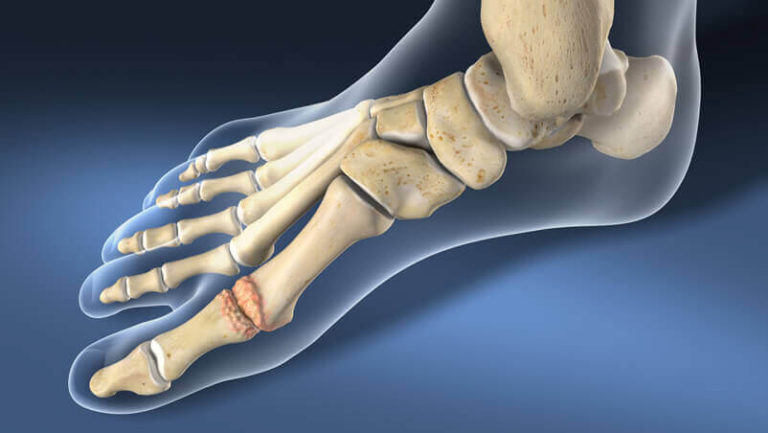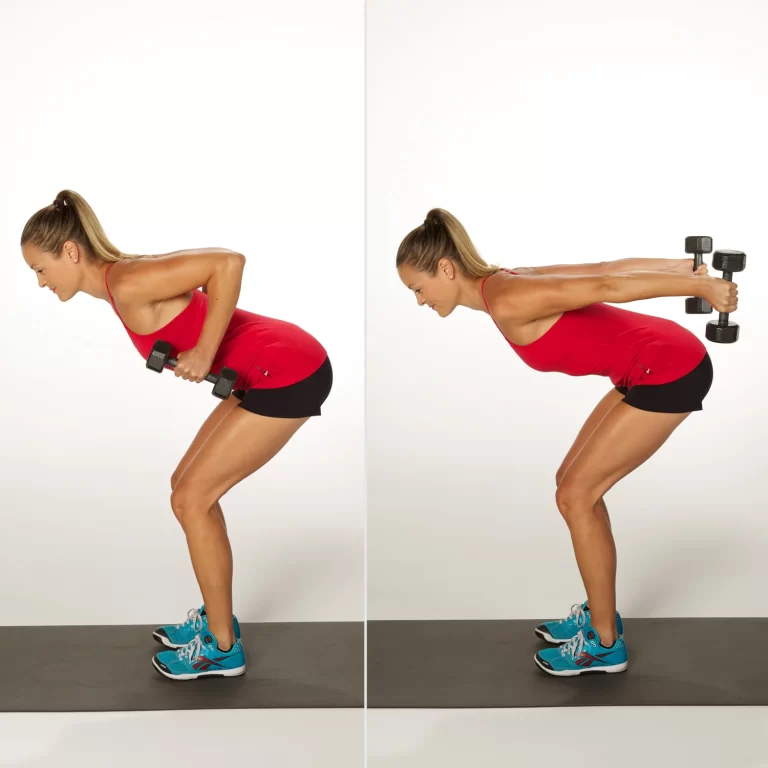Swastikasana (Auspicious Pose)
What is Swastikasana (Auspicious Pose)?
Swastikasana is a seated position used mostly for meditation. A yoga series that ends with the exercise of pranayama and meditation can be done in Swastikasana. Unlike Sukhasana (Easy Position), Swastikasana essentials deeper flexing of the ankles, and the knees, along with the internal rotation of the hips. A more demanding seated meditative yoga position though is Padmasana (Lotus Position) which requires deeper internal rotation of the hips.
Swastikasana or the Auspicious Position is a simple meditation position for those who cannot aim for the more difficult asanas like Padmasana and Siddhasana. The Indian symbol of Swastika is a logo of auspiciousness. In Swastikasana, the position of the legs take after the symbol of the Swastika. The word Swastika approaches from the Sanskrit root words Su means Good, Asti means to be or Existence and Ka means to make. This asana can be narrated as one that helps to register the unity of existence.
Swastikasana – A Pathway to Higher Consciousness
Swastikasana is the earliest seated meditation position in Hatha Yoga. The following shloka from Hatha Yoga Pradipika (HYP) relates how to get into this posture and also states that this explanation finds validation in other important texts on Yoga like Gherand Samhita, Hatharatnavali, and Shiva Samhita.
Translation – (Place both soles (of the feet) on the inner side of the thighs and sit provided with a straight body. This is called Swastikasana.) If we reside deeper into the philosophical aspect of Swastikasana, some scriptures consider it as the most favorable position for comprehending the unity of existence.
Swastikasana is the first physical position that is narrated in the Hatha Yoga Pradipika (HYP). This crossed- legged seated position with the feet kept below the thighs on either side also qualities as a meditative seat in other centuries classical texts like Patanjalayogasastravivara and Vimanarcanakalpa, respectively.
On the physical level, regular exercise in this posture stretches the muscles of the hips and hamstrings and increases their flexibility. Mentally, it is suitable to upgrade the concentration level and instill a sense of calmness and meditativeness. Specific emphasis is also given to the spine’s adjustment so that there is no blockage to the prana flow to activate the Sushumna Nadi, situated within the spinal cord. It is also an excellent another for yoga practitioners who find it heavy to sit in other classical postures like – Padmasana (Lotus Position) and Siddhasana.
Regular exercise with a straight spine and palms in Gyan mudra is called to activate the Third Eye Chakra (Ajna Chakra). Metaphorically detected between the eyebrows, this chakra is the center of perception, consciousness, and intuition. How does one affect the self and the external world and the ability to cut through illusions to see actuality for what it is are some of the characteristics of this energy center. Importantly, both the right and left brain hemispheres are affected and a balance is created between one’s logical and creative thinking, respectively.
What are the Health Benefits of Swastikasana (Auspicious Pose)?
When seated in Swastikasana, the spine and neck should always remain neutral and not overextended. The most dominant thing though is to be straight and not have a hunched back, as then, the necessary benefits will be lost. Swastikasana is simple as compared to other meditative yoga asanas. Given under are the most important benefits that a yoga student will derive from the exercise of Swastikasana:
- Swastikasana Helps to Remove Stress: Studies have been shown that exercising Swastikasana on an efficient basis is not only good for our stomach but also helps to calm the mind and release the stress. Sitting in this position can put stress on leg muscles and upgrade flexibility and keep our leg muscles relaxed. Exercising this asana with slow breathing can decrease the stress and increase the blood flow to the whole body, so it is highly approved for those who are suffering from stress; they should exercise this yoga regularly.
- Swastikasana Increases the Focus of Mind and Concentration and Memory: Regular exercise of Swastikasana helps to upgrade the focus of mind and concentration because while doing Swastikasana, it will help to encourage the blood flow to the brain and proportions are extra. Due to an increase in blood flow to the brain, it obtains more oxygen and vital nutrients, hence your brain gains more concentration and functions properly. So this asana is highly approved by the people, if they exercise Swastikasana regularly, it can upgrade their concentration on studies and they will focus more on their carrier. The benefits of pranayama and meditation are increased when done in the right seated posture. Seated in Swastikasana the level of concentration expands as the energy flow is smooth between the unblocked channels. This conducts an increased level of focus, concentration, and memory. Daily exercise in this meditative position, will improve the concentration level.
- Swastikasana Strengthen Hip, Knee, and Thigh Muscles: Different studies have proven that regular exercise of Swastikasana, can stretch your Hip, Knee, and Thigh Muscles, which put extra pressure on these muscles, so that blood flow will increase in this region and muscles will get more amount of oxygen and nutrition, which helps them to strengthen and regular exercise of this asana also can help to block injury in Hip, Knee and Thigh Muscles during exercise and other works. It helps extend the calves, spine, and hamstrings.
- Swastikasana Enhance Sexual Health: Exercising Swastikasana regularly can increase sexual performance because while doing this yoga asana, it stretches our sexual organ, which helps in the manufacture of stress hormones in that area that helps to stimulate our sexual organ and it also improves the blood flow to the sexual organ will help to increase the function of sexual production.
- Swastikasana Improves Digestive Health: Independent studies have proven that regular exercise of Swastikasana can improve our digestive health and it also helps to prevent various types of digestion- related issues, such as constipation because the regular exercise of Swastikasana put some extra pressure on the stomach and inner intestine organ, due to this our body creates stress hormone, which helps to encourage the function of the digestive system that improves the proper bowel motion and also helps to assist the production of digestive juice and enzyme that helps in digesting food and helps to check the waste from our body.
- Swastikasana Helps to Reduce Back Pain: Different studies have been proven that regular exercise of Swastikasana can very helpful for those who are suffering from any eternal back pain, because while exercising this asana generates lots of pressure on the spine and it can also stretch the spine, which helps to improve the flexibility of our spine that helps to check back pain. Beneficial for those having a fluid holding in the legs.
- Swastikasana Reduce Lower Body Fat: Regular exercise of Swastikasana is very beneficial for diminishing the lower body fat, because while doing this Swastikasana, it creates lots of pressure on the lower body part, due to this our lower body muscle gets competent and helps in reducing the fat in this area.
- Comforting and Calm: When the spine is straight and follows the neutral shape, the energy flow from the base of the spine to the top of the head moves to inspire the nervous system to be relaxed. A restful nervous system helps calm the mind, raising better focus and awareness. It gives calmness to the mind.
- Chakra activation: When the flow of prana is smooth and simple through unblocked channels, the Muladhara (Root) Chakra along with Ajna (Third Eye) Chakra is activated. This benefit though is obtained when the exercise is done for a longer duration.
- Others: It is the best meditation Asana for those people who cannot sit comfortably or find difficulties in classical positions like Padmasanaand Siddhasana. This asana is normally used for Dhyana (meditation) and Pranayama (breath) exercises. Those people who are agonizing from varicose veins and aching in the leg muscles can perform this Swastikasana. Swastikasana is a magnificent asana relatively easy to perform and can be done by all, from child to young. When done in the right way, it also helps to upgrade and boost immunity. When the exercise for a long duration, it also activated the Muladhara (Root) Chakra along with Ajna (Third Eye) Chakra. This yoga position conducts smoothness in the eyes and also contracts eye strain. Rejuvenation of the nervous system. It also helps build confidence.
What are the Preparatory poses for Swastikasana (Auspicious Pose)?
In the exercise of Swastikasana Variation (Auspicious Position Variation) the flexing of the hips and ankles are necessary, thereby helping students to sit for longer hours for meditation. For the few preparatory positions are given below:
- Ankle Rotations Close-up
- Baddha Konasana (Bound Angle Position)
- Shoelace Position
- Standing Quad Stretch Position
- Sukhasana (Easy Position)
- Hindolasana (Cradle Position)
- Tadasana On Tiptoes (Mountain Position On Tiptoes)
- Baddha Supta Sukhasana (Bound Reclined Easy Position)
- Easy Position (Sukhasana)
- Padmasana Preparatory Exercises
How to Perform Swastikasana (Auspicious Pose)?
To begin this Swastikasana obtain onto the yoga mat and sits comfortably on the yoga mat on the floor and spread both the legs anterior to you.
Now come in Dandasana (staff position), sit with spread both the legs anterior of you, and create them at a distance of 1.5 feet.
Now breathe in and breathe out, modify.
Now bend your left leg and keep the sole of your left leg on as opposed to the inner thigh of your right leg.
In the same way, twist your right leg and try to place your right foot in the space between the left thigh and calf muscles. In this recollect that Right heel must not touch the pubis.
Keep in mind that your knees have to rigidly touch the ground. keep your body and back straight.
Maintain the position so that you feel moderated, and also keep your head and neck in one line.
Try to safe keep your back, head, and neck straight.
Make adjustments to yourself feel greater.
Now conduct both the hands on your knees in any mudra such as jnana or chin.
Keep your spine straight at all times through this position. and not overextended.
Try to be in this position for some time, close your eyes, and continued on the breathe in and breathe out slowly and normally.
Modify the whole body.
For starters, try to be in this position for 3 to 5 minutes.
To deliver from this position, slowly come to the establishing position and then keep your leg straight and take a deep breath and modify.
Now you can again do this asana. You should do a minimum of 30 minutes of this asana for greater results.
Originally, when you start this yoga asana, you feel some pain in your thigh, calf, ankles, and back, but as you exercise more you can do this asana more simply.
Affect chin mudra with your hands and relax your hand over the knees.
Continue the posture as long as it is comfortable. Therefore, you can also exercise Dhyana, Japa, and other seated spiritual exercises.
Return to the normal position by unfriendly both legs, straightening, and a little shaking, individually.
How to Perform Swastikasana (Auspicious Pose) By Watching a Video?
What are Follow up poses for Swastikasana (Auspicious Pose)?
- Reclined One Armed Hero Position (Eka Bhuja Virasana)
- Parvatasana
- Sharanagat Mudra
- Ardha Padmasana
- Padmasana
- Siddhasana
What are the Beginners tips in Swastikasana (Auspicious Pose)?
- Beginners may face problems in realizing this yoga position excellently due to the tight muscles of the hip. It is preferable to place a folded blanket below the sitting bone.
- If the knees are unable to touch the ground, pillows should be used to support them. Make certain not to stretch too much or touch the ground forcibly.
- In case of lordosis and kyphosis, you should rest their back as opposed to the wall. You can also go for the yoga wedges to straight back by positioning it between your scapula.
What is the Breath Awareness in Swastikasana (Auspicious Pose)?
- A stable foundation of the legs and spine
What are the Types of Swastikasana (Auspicious Pose)?
- Adho Mukha Swastikasana (Easy Pose Forward Bend)
Adho Mukha Swastikasana (Easy Pose Forward Bend)
What is Adho Mukha Swastikasana (Easy Pose Forward Bend)?
Adho means Forward, Mukha means Face, and Svana means Dog. The asana is pronounced as A-doh MOO-Kah-shvah-NAS-anna. Easy Position Forward Bend is a calming-and-soothing forward fold achieved in Sukhasana with the arms expanded in the anterior and forehead touching the floor. A grounded exercise with every expiration helps release a little more tension and increase concentration while consciously inspecting the breath. Therefore an easy position increasing focus can be included in yoga sequences for kids and teens. This asana can be exercised by any beginner too and with all its benefits, one should include it as a part of daily yoga exercise.
A restorative stretch for the whole body is a good check-in for back and pelvic muscles and also helps in replacing any stress or tension built in the body after vinyasa flow or exercising deep backbend positions which otherwise can give stand up to various backaches in later stages. Hence, a relaxing position is often included by yoga teachers near the end of daily yoga classes to diminish anxiety and fatigue following yoga flows and even after a pranayama routine. For obese people or otherwise, who are not able to touch their forehead on the floor then the use of the bolster or block should always be received.
Adho Mukha Swastikasana other also known as Easy Position Forward Bend, Adho Mukha Sukhasana, Adho Mukha Swastikasana.
Start by placing a low bench, chair, stack of cushions, or yoga blocks anterior to you, about the height of the breast bone. To enter the asana, start in a seated, cross-legged region. Remain the body is properly supported and seated on the sit bones, with a cushion, blanket, or bent yoga mat underneath the bottom. While seated, lean over the selected prop in the anterior of the body, keeping the sit bones and hips on the ground, and the head and neck relaxed. Admit the hands to rest at the sides of the body or bend the arms in the anterior of the body on the protective prop. While breathing deeply, detain the asana for two minutes. Adho Mukha swastikasana is also called a downward-facing cross-legged position in English.
Adho Mukha swastikasana is a simple asana for beginners that offers a kind stretch to the hips and low back while using supportive props. As flexibility increases over time, yogis can adjust the height of the collected cushions or blocks to customize the intensity of the stretch. Adho Mukha swastikasana is a light-supported asana that incorporates yoga props to offer mental and physical relief. It also reduces the symptoms of premenstrual stress.
This asana relieves back and neck strain while stretching the hip flexors, and is appraised by many to be a position that offers stress and anger reduction, which is also beneficial to those encountering mood swings. In addition, it helps improve blood circulation and relieves premenstrual stress symptoms. Some yogis also find that it removes headaches and symptoms of nausea, vomiting, and morning sickness. Due to the position of the chest and throat, this asana can be useful for both the buddha (throat) and Anahata (heart) chakras.
What are the Health Benefits of Adho Mukha Swastikasana (Easy Pose Forward Bend)?
Considered to be a seated restorative position, there are many more benefits that will be derived from the exercise of Adho Mukha Sukhasana. They are explained below:
- Stretches, Strengthens, Lengthens: Easy Position Forward Bend conducts a gentle stretch to the total hip muscles and lowers the back, mainly the sides of the upper back while the arms are lengthened completely. This further tones the pelvic floor muscles strengthens the back muscles, and independents the individual vertebrates from each other, delivering pressure off the discs which otherwise can give rise to various forms of backaches. It lengthens the spine, strengthens the muscles of the chest increasing lung volume. It conducts strength throughout the body, especially the arms, shoulders, legs, feet.
- Chest, Diaphragm, and Breath: This easy variation of the forward twist with the arms expanded in the anterior helps open the sides of the body, creating more space for ribs to extend laterally, which further helps in the functioning of the lungs, thereby increasing its volume. Once breathing becomes easy, the Easy Position Forward Bend lets peoples obtain the confidence to stay in the advanced forward twisting asanas for longer. Relieves palpitations and breathlessness.
- Awareness and Focus: Easy Position Forward Bend helps practitioners to create body-breath connections. A position with little and no stretch can help people to easily conduct their awareness of their breath. This way the power of concentration is upgraded and breathing is also increased.
- Energizing, De-stressing, and Relaxing: Easy Position Forward Bend is a good way to modify the spine, shoulders, neck, and head, and conducts a calming and soothing effect on the mind and circulatory respiratory nervous systems of the body and therefore can be exercised after a yoga session or as a counter-movement to the spine after the exercise of deep back-bends. This gentle effect helps the free flow of prana (energy) throughout the body and inspires the stimulation of the various chakras conducting balance in both the body and mind. This position leaves you stimulated and rejuvenates the body.
- Stimulation and Organs: In Easy Position Forward Bend the abdomen is depressed towards the cross of the legs, gently massages the organs of the abdominal cavity, which means upgrading the functioning of the digestive and reproductive systems. An easy position relieves the symptoms related to disorders in the kidneys, urinary bladder , or irregular menstrual periods.
- Others: This variation of a forward bend in Easy Position is a grounding exercise that helps students to take their awareness more and more inwards and with time can act as a production for Dharana-Dhyana (next-level yogic exercises). A secure exercise can be included in yoga sequences for seniors and women during menstruation. Helps to tone muscles. It increases circulation to the brain. Quiets the sympathetic nervous system, relieving stress and fatigue. Diminishes migraines and stress-related headaches, Calms the mind, and helps insomnia. Helps stop nausea and vomiting. Relieves pain in the hip joints. Rests wearied legs and improve blood circulation in the knees.
What are the Preparatory poses for Adho Mukha Swastikasana (Easy Pose Forward Bend):
- Phlakasana (Plank position)
- Uttanasana (Forward Bend Position)
So, guys, this was all about the yoga position Adho Mukha Svanasana.
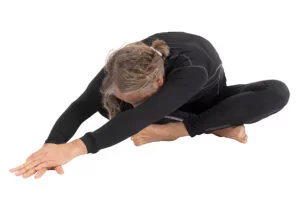
How to Perform Adho Mukha Swastikasana (Easy Pose Forward Bend)?
Given under are the step-by-step instructions to follow for the exercise of Adho Mukha Sukhasana:
Start by sitting in Sukhasana with a slight forward twist so your palms modify on the mat in the anterior of the legs.
Stay here for a few simple breaths, producing your back tall, shoulders wide, and hands straight in the elbows.
As you breathe out raise the hips, straighten the knees and elbows, and form a reversed V-shape with the body.
As we start to twist forwards, take a deep breath in, while expiring, go down sliding your hands forwards to rest your hands and forehead on the floor.
Twist the arms slightly so that they are moderated and let the elbows rest on the ground.
Stay here in the Sukhasana Forward twist for 8-10 breaths.
The people who are not able to touch their forehead on the floor can use the bolster or a block to modify their foreheads on.
Keep your hips implanted and your shoulders back. For making this position a relaxative or a resting one, maintain the tops of the shoulders externally rotating away from the ears to keep a nice gape between the ears and shoulders.
To release, raise your face to look in anterior, inspire, gently sliding your hands back to conduct yourself back to an upright seated position.
Modify in Sukhasana with your palms modifying on the knees or above the knees with your fingers waving in.
Exercise the positioning step by step to do it excellently.
What are the Variations of Adho Mukha Swastikasana (Easy Pose Forward Bend):
Adho Mukha Swastikasana variations with base position as Easy Position (Sukhasana).
As peoples have varying capacities, a given yoga position may be easy for a particular person but hard for another. In such cases, as a yoga trainer you can introduce position variations to other challenge person who are finding a specific yoga position simple, or introduce an easier variation of a posture for the people who are finding the main position hard.
Position variations can hence help your peoples extend and build further confidence in their yoga exercise no matter what their starting capability levels are. And this is where your role as a yoga teacher embellishes more important. Under we have compiled many position variations of Adho Mukha Swastikasana is one place to give you ideas to plan your yoga classes as you interrelate with students of different levels.
Below are some common variations of the yoga position Adho Mukha Swastikasana with the base position as Easy Position (Sukhasana).
- Easy Position
- Easy Position Neck Side Stretch
- Seated Torso Circles
- Seated Shoulder Rolls
- Easy Position Variation Arms Knees
- Easy Position Warm-Up Flow
- Revolved Easy Position
- Easy Position Bound Hands
- Easy Position Prayer Hands Variation Revolved Easy Position Flow
- Easy Position Eagle Arms
- Sitting Deltoids Stretch
What are the Precautions and Contraindications for the Adho Mukha Swastikasana (Easy Pose Forward Bend):
Precautions to take while exercising Adho Mukha Svanasana:
- Do a warmup ahead of exercising this position.
- Do not eat any meal at least 3-4 hours ahead of exercising yoga.
- If you have an injury in your ankles, wrists, and back, then do not exercise this position.
- If you agonize from cardiac or stomach problems, do not exercise Adho Mukha Svanasana.
Adho Mukha Swastikasana Contraindications:
Although an easy position, yoga teachers should keep the following restrictions in mind before introducing the exercise of Easy Position Forward Bend:
- Injury and Surgery: People with a present or recent abdominal surgery or with injuries at the hips, knees, or lower back should not aim in the position.
- Physical Strength and Weak Injury: Peoples with tight hips or otherwise due to less elasticity are not able to modify their forehead on the floor then the use of bolster or blocks should be received.
- Others: Pregnant women should not experiment with this variation of the forward twist, but can follow the same in Butterfly Legs. Besides that, it is a corrective position and students of all levels can do it within their limits and capacities. If you cannot sit in Virasana due to aching feet, you can exercise this yoga position instead. If you have stress-related headaches or a migraine, wrap a bandage around your eyes. Avoid doing this asana if you suffer from high blood pressure, Carpel tunnel syndrome, separated eye retina, weak eye capillaries, injury of shoulder/dislocated shoulder, or diarrhea.
What are the Variations of Swastikasana (Auspicious Pose)?
This variation is easier than the above one and useful for people with stiff bodies:
- Note the steps 1 to 3 of the above variation.
Twist the right knee placing the right foot on the ground in the anterior of the left foot. The sole must face is opposed to the left shin.
Both the heels must be anterior to each other now. The position of the hands will be related to the above variation.
Legs can be straightened at 90 degrees to the ground.
Siddhasana has one most exercised variation.
If it is difficult instead of placing the second leg on top place the foot on the ground, sole as opposed to the shin.
The hip joints must be moderately above the knees, otherwise, the pelvis tilts posteriorly, the spine flexes and tightens, and many of the bordering muscles try to recompense working against gravity which causes fatigue. Therefore if one cannot sit with the hips higher than the knees a small pillow or twisted blanket should be used to restore the normal spinal curves, and allow the body and head to be correctly supported. - As students have varying capabilities, a given yoga position may be simple for a particular student but hard for another. In such cases, as a yoga teacher, you can introduce position variations to further challenge people who are finding a specific yoga position simple, or introduce an easier variation of a position for the people who are detecting the main position hard.
- Position variations can hence help your students grow and build further confidence in their yoga exercise no matter what their starting capability levels are. And this is where your role as a yoga teacher becomes very principal. Under we have composed so many position variations of Auspicious Position at one place to allow your ideas to plan your yoga classes as you interconnect with students of different levels.
Below are some common variations of the yoga position Auspicious Position with a base position as Lotus Position (Padmasana).
- Lotus Position
- Scale Position
- Seated Moutain Position in Auspicious Position
- Half Lotus Position
- Half Lotus Position Variation Hands Behind Head Side Bend
- Revolved Half Bound Lotus Position Forward Fold
- Half Lotus Position Arm Raised Forward Bend Flow
- Half Lotus Position Hands Flow
- Half Lotus Tip Toe Position
- Half Lotus Position Side Bend
- Half Lotus Position Hands Flow
What are the Modifications in Swastikasana (Auspicious Pose)?
Beginners might face problems in performing fully swastikasana due to their tight hip muscles. It is desirable to put a twisted blanket beneath your sitting bone.
If knees are impotent to touch the ground then one should use a pillow to support them. Make certain do not overstretch or forcibly touch the ground.
In the case of Lordosis and Kyphosis, the practitioner should modify their back as opposed to the wall. You can go for wedges also to straight back by putting it between the Scapula.
What are the Precautions and Contraindications for the Swastikasana (Auspicious Pose)?
Swastikasana (Auspicious Position) Precaution and of Contraindications:
If the exercise of pranayama and meditation in Swastikasana (Auspicious Position) is a challenge, people can choose to sit in Sukhasana (Easy Pose). The other difference is to support the hips keeping the spine raised by placing a cushion or a blanket. The exercise of Auspicious Position comes with few contraindications, which are explained below:
Injuries to the hips, knees, and ankles: The crossing of the legs and the internal rotation of the hips play a critical role when seated in Swastikasana (Auspicious Position). Hence, particulars injured at the hips, knees, and ankles should avoid exercising this position. For comfort though, and as an alternative, the legs can be expanded when sitting rolled up on a yoga mat rolled. Care should be clasp if one has hip, knee, or ankle pain. Injury in the area of the hip, knees, and ankle avoids doing this asana due to the involvement of leg level crossing and hip rotation in asana.
Sciatica: The sciatic nerve gets pressed when seated in Swastikasana diminishing blood supply to the nerve. This can become painful and insecure for those suffering from sciatica, therefore best to avoid. Sitting in Swastikasana (Auspicious Position) narrows the sciatic nerve, which decreases the blood supply to the nerve. It can be painful and insecure for people with sciatica, so it is best to avoid exercising this yoga position. Sciatica patients could be below threat or might aggravate the condition as swastikasana presses a sciatic nerve.
Pregnant women: For those pregnant women who exercise prenatal yoga, should avoid this posture if they have expanded legs (water retention). Finishing the flow of blood in the hips and the pelvis is not desirable during the last stages of pregnancy (third trimester). In such cases, seated on a pillow with the legs expand for pranayama or meditation is stimulated.
Knee, hip, and foot arthritis: People with arthritis of the knees, hips, and feet should avoid sitting on the ground. Critical on these joints can cause swelling and pain for people with arthritis.
Others: This asana is very easy and anyone can exercise. Swastikasana should not be done by those agonizing from sciatica and sacral infections. or concern a doctor. Those who are supported by sciatica or those with knee pain or injury should skip this asana. People with arthritis of the knees, hips, and feet should avoid sitting on the ground.
What are the dos and Don’ts in Swastikasana (Auspicious Pose)?
Do’s:
- Keep the legs straight in knees with toes directed to the sky.
- Keep the spine vertical.
- Lift the lower back & buttocks off the floor.
- Hands, upper arms & elbows on the floor while supporting the waist with the hands.
- Shoulders modified on the floor.
- Have the posterior parts on the knees, not of the knees.
- Head straight and eyesight fixed on the lifted toes.
- Note that the legs can be taken towards the head for keeping the balance.
- legs can be extended at 90 degrees to the ground.
Dont’s:
- Do not bend the legs to the knees.
- Do not take the legs over your head in the position, but you can take the legs over your head while taking and delivering the position.
- Do not move the neck while in this position.
- Do not maintain the legs and back in one straight line as in Sarvangasana (Shoulder stand)
- Strain the knees or ankles.
- Press the heel against the perineum.

